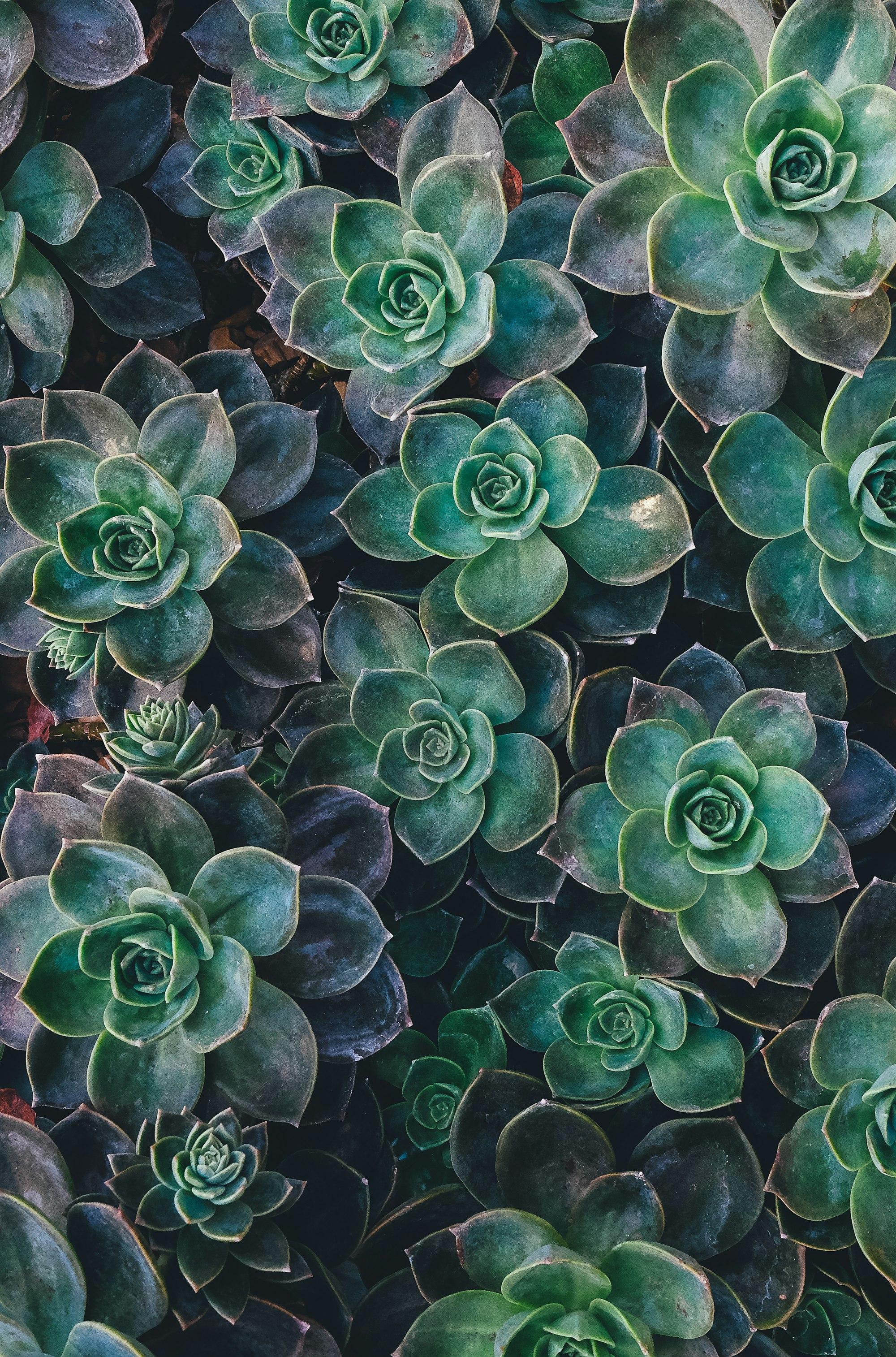How to Not Kill Succulents: 9 Ways to Care for Your Plants
Succulent care requires attention, but with these nine tips you'll have a green thumb in no time and keep your plants alive and thriving.

Succulents are beloved for their stunning appearance and low-maintenance nature. However, many people struggle to keep these plants alive and thriving. With the right knowledge and care, you can enjoy a beautiful succulent garden without the fear of their untimely demise. Let's explore nine essential tips and techniques to help you become a successful succulent gardener.
1. Optimal Light
One of the most crucial factors in succulent care is providing them with the right amount of light. Different succulent varieties have varying light requirements, so it's essential to understand the needs of your specific plants.

Understanding the Light Needs of Different Succulent Varieties
Some succulents thrive in direct sunlight, while others prefer partial shade. Varieties such as Echeveria and Sedum love bright, indirect light and can tolerate a few hours of direct sun each day. On the other hand, Haworthia and Sansevieria prefer lower light conditions and can be placed near a window with filtered light. It's crucial to research your succulent species and find the perfect spot in your home or garden that suits their light requirements.
If you notice your succulents stretching or becoming leggy, it's a sign that they are not receiving enough light. In such cases, consider moving them to a brighter location or providing additional supplementary light using grow lights.
2. Regular Rotation
Rotating your succulents regularly is a simple yet effective way to promote even growth and prevent your plants from leaning towards the light source. Succulents have a natural inclination to bend and reach towards the sun, resulting in uneven growth and potential instability.
The Benefits of Rotating Your Succulents
By rotating your succulents every few weeks, you ensure that all sides of the plant receive an equal amount of light. This leads to more balanced growth and prevents the plants from becoming top-heavy. Additionally, regular rotation encourages the development of a full, symmetrical shape, making your succulents more visually appealing.

To rotate your succulents effectively, gently turn the container or adjust the position of the individual plants. Be cautious not to break any stems or damage the roots in the process. Aim to rotate the plants by around 180 degrees to ensure that each side receives equal exposure to light.
3. Seasonal Watering
Watering is a fundamental aspect of caring for succulents, but it's important to understand that their watering needs vary depending on the season. Properly adjusting your watering practices throughout the year ensures optimal growth and prevents common issues such as root rot and dehydration.
Tailoring Watering Practices to Each Season
During the active growing season, which is typically spring and summer, succulents require more frequent watering. However, it's crucial to allow the soil to dry out between waterings to prevent overwatering. You can determine this by checking the moisture level in the soil using your finger or a moisture meter. If the soil feels dry up to an inch deep, it's time to water your succulents.
In contrast, during the dormant season, which is usually fall and winter, succulents enter a period of rest and require less water. Reduce the frequency of watering, allowing the soil to dry out more before giving your plants a thorough drink. This mimics their natural habitat where rainfall is scarce during winter months.
Remember that overwatering is the leading cause of succulent death, so always err on the side of caution and water less rather than more. The thick leaves of succulents store water, allowing them to withstand periods of drought.
4. Selecting the Perfect Container
The choice of container plays a crucial role in the health and well-being of your succulents. When selecting a container, prioritize factors such as drainage and adequate space for root growth.

The Importance of Drainage in Succulent Containers
Succulents dislike sitting in waterlogged soil, as it can lead to root rot and other fungal diseases. Choosing a container with at least one drainage hole allows excess water to escape, preventing moisture buildup. Ensure that the container has a saucer or tray to catch the drained water, as this will help protect your surfaces.
Additionally, consider using a well-draining soil mix to further enhance the drainage capabilities of the container. A mix containing ingredients such as perlite or pumice allows water to flow through the soil quickly, reducing the risk of overwatering.
Lastly, the size of the container is crucial in providing enough space for the succulent's roots. As a general rule, select a container with a diameter that is slightly larger than the width of the plant at its widest point. This allows room for growth while preventing overcrowding and root-bound conditions.
5. Correct Soil
Proper soil composition is vital for ensuring the health and vitality of your succulents. Succulents dislike soil that retains moisture for extended periods, as it can lead to root rot and other complications.
Choosing the Right Soil Mix for Your Succulents
When planting succulents, it is recommended to use a well-draining soil mix specially formulated for succulents and cacti. These mixes typically contain a combination of coarse sand, perlite, and a well-balanced potting mix. Avoid using regular garden soil, as it tends to be too heavy and retains too much moisture for succulents.

To prepare your own succulent soil mix, combine three parts potting mix with one part coarse sand or pumice. The sand or pumice increases the drainage capabilities of the soil, preventing water from sitting around the roots.
Remember to repot your succulents every few years to refresh the soil and provide them with fresh nutrients. Over time, the soil can become compacted, hindering drainage and nutrient absorption.
6. Proper Watering
When it comes to watering succulents, the method you choose can significantly impact their overall health and longevity. Directly watering the soil, rather than the leaves, is the preferred approach to ensure optimal water uptake and prevent potential issues.
Tips for Watering Succulents Without Overwatering
When watering succulents, aim to thoroughly wet the soil until water drains out of the bottom of the container. This ensures that the water reaches the root zone, where the plant can absorb it effectively. Avoid misting or spraying water on the leaves, as this can lead to leaf rot and other fungal diseases.
To prevent overwatering, allow the soil to dry out before the next watering session. Succulents are designed to withstand dry periods and store water in their leaves and stems. By allowing the soil to dry out, you are imitating their natural environment and promoting healthy growth.
7. Regular Cleaning
Regular cleaning and grooming are essential aspects of succulent care, helping to maintain their aesthetic beauty and overall health. Dust, debris, and dead leaves can accumulate on the surface of the plant, hindering photosynthesis and potentially attracting pests.

Cleaning and Grooming Succulents for Optimal Health
To clean your succulents, use a soft brush or a damp cloth to gently wipe away any dust or debris. Avoid using harsh chemical cleaners, as succulents are sensitive to chemicals and can become damaged. For hard-to-reach areas, use a soft toothbrush to gently remove dirt.
Additionally, regularly remove any dead leaves or spent flowers from your succulents. These decaying parts can provide a breeding ground for pests and diseases, so it's important to maintain a tidy and clean environment for your plants.
8. Eliminate Pests
Pests are every gardener's nightmare, and succulents are not exempt from these tiny invaders. However, it's important to use safe and natural methods when dealing with pests, as many commercial pesticides can harm your plants.
Natural Ways to Keep Bugs Away from Your Succulents
One effective method for warding off pests is to create a natural insect repellent spray using ingredients readily available in your pantry. For example, combining water and dish soap in a spray bottle creates a mild soapy solution that can deter pests without harming your succulents. Simply spray the leaves and stems of your plants with the mixture every few days or as needed.

You can also use a cotton swab soaked in rubbing alcohol to spot-treat pests such as mealybugs or aphids. Gently rub the affected areas, ensuring you cover all the pests. However, be cautious as rubbing alcohol can harm certain succulent varieties, so test it on a small area before treating the entire plant.
If pests persist despite your best efforts, consider isolating the affected plant from the rest of your collection to prevent the infestation from spreading. Continue with regular cleaning and monitoring to ensure a pest-free environment for your succulents.
9. Just Don't Die
With proper care and attention to their unique needs, succulents can thrive and bring a touch of natural beauty to your surroundings. By understanding the importance of light, watering, soil, and maintenance, you can keep your succulents healthy and vibrant for years to come. Remember to tailor your care practices to the specific requirements of each succulent variety, and don't be afraid to experiment and learn along the way. So go ahead and embrace the joy of succulent gardening – you'll soon discover it's not as difficult as it may seem!
Ready to elevate your succulent gardening game even further? Our platform helps you make smarter shopping decisions by providing detailed price comparisons across various stores. Don't miss out on the opportunity to find the same high-quality products at more affordable prices. Check out products on Spoken now and ensure your succulents are set up for success without overspending.
Quick facts
How do you care for succulents and not kill them?
To care for succulents, provide bright indirect light, water sparingly, and use well-draining soil. Avoid overwatering to prevent root rot.
How do you keep succulents from dying?
Keep succulents alive by ensuring proper drainage, watering only when the soil is dry, and placing them in a well-lit area.
Why are succulents so hard to keep alive?
Succulents can be challenging because they require specific conditions, including low water, bright light, and well-draining soil. Overwatering is a common mistake.
What is the trick to keeping succulents alive?
The trick to keeping succulents alive is mimicking their natural habitat: provide bright light, infrequent watering, and fast-draining soil.
Do coffee grounds kill succulents?
Coffee grounds can harm succulents by altering soil pH and retaining too much moisture. Use sparingly if at all.
How do you replant succulents without killing them?
Replant succulents by removing excess soil, handling roots gently, and placing them in fresh, well-draining soil. Water lightly after a few days.
Will succulents regrow after dying?
Some succulents can regrow if parts like leaves or offsets are healthy. Remove dead sections and replant viable parts in fresh soil.
How do you water succulents without killing them?
Water succulents deeply but infrequently, allowing the soil to dry out completely between waterings. Avoid letting water sit on the leaves.
How do you save succulents?
Save succulents by removing damaged parts, repotting in fresh soil, and adjusting light and watering conditions to suit their needs.
How often do you water a succulent?
Water succulents once the soil is completely dry, typically every 2-3 weeks. Adjust based on the season and indoor humidity.
Do succulents need sun or shade?
Succulents prefer bright, indirect sunlight but can tolerate partial shade. Too much direct sun can scorch their leaves.
Is succulents a good indoor plant?
Yes, succulents make excellent indoor plants as they require minimal care and thrive in bright, well-lit areas.
What is the easiest succulent to grow?
Jade plants, aloe vera, and echeveria are among the easiest succulents to grow due to their hardy nature and low maintenance needs.
Should succulents be indoor or out?
Succulents can be grown indoors or outdoors. Indoors, provide bright light; outdoors, protect from extreme temperatures and overwatering.
Can succulent plants live outside?
Yes, succulents can live outside in mild climates. They require well-draining soil and protection from frost and excessive rain.

Dane Hurtubise
Co-founder & CEO of Spoken
Dane Hurtubise is the Co-founder & CEO of Spoken. He has led two venture-backed companies and is a two-time Y Combinator alum. Prior to Spoken, Dane sold his previous company, Parklet, to Greenhouse Software where he served as VP of Platform and Partnerships. An avid runner, cyclist, and Pilates enthusiast, Dane holds a BS in Electrical and Computer Engineering from the University of Texas at Austin.
Read more

